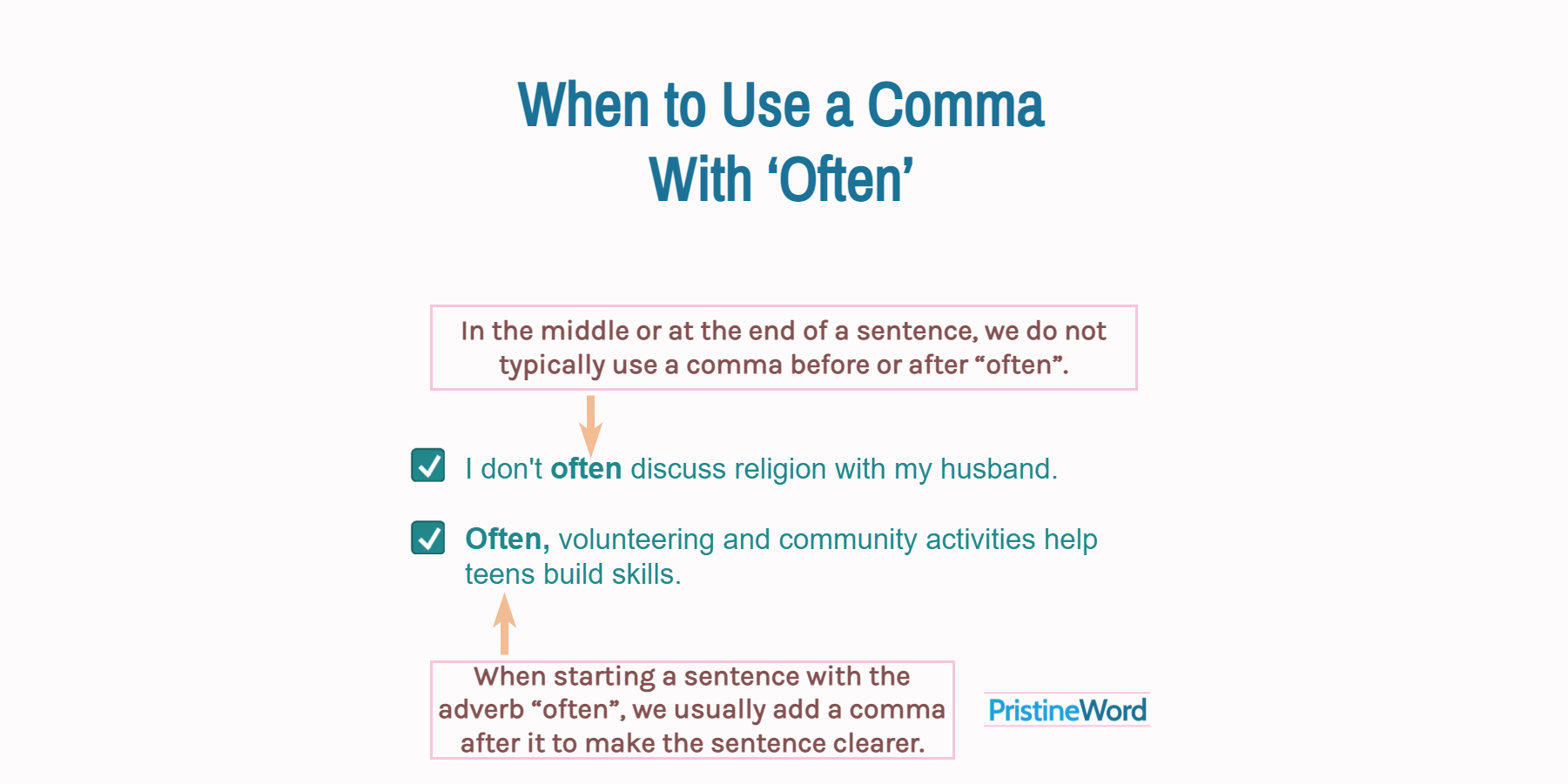In the middle or at the end of a sentence, we do not typically use a comma before or after “often”.
In the middle or at the end of a sentence, we do not typically use a comma before or after “often”.
Boredom often leads to poor behavior.
People are often victims of their own natures.
When starting a sentence with the adverb “often”, we usually add a comma after it to make the sentence clearer.
Often, overprotective parents contribute to poor student behavior.
Contents
1. Where to Place ‘Often’ in a Sentence
“Often” means “in many cases” or “frequently”. In the middle of a sentence, we can use it:
- Before the main verb (e.g., "I often go to church on Sundays.")
- Between the auxiliary verb and the main verb (e.g., "Republicans have often done well in Texas.")
- After the verb "to be" (e.g., "My sister is often sick.")
At the beginning of a sentence, the meaning of the adverb is usually stronger.
Often, sensitive people are emotionally exhausted from absorbing other people’s feelings.
2. Commas Are Commonly Unnecessary in Mid-sentence
In the middle of a sentence, we do not generally use a comma to separate an adverb of frequency from the verb it modifies.
John was often making trouble among his neighbors.
John was, often making trouble among his neighbors.
Another example:
I don't often discuss religion with my husband.
On rare occasions, however, you may use commas to create a parenthetical feel or interrupt the sentence flow.
Distant learning, often, is a viable alternative for people living in remote areas.
But placing “often” in the usual position, without commas, frequently sounds more natural.
Distant learning is often a viable alternative for people living in remote areas.
3. Using a Comma At the Beginning of a Sentence
At the start of a sentence, we can optionally use a comma after “often”.
Often, I have a beer with my friends to relax and unwind.
Often I have a beer with my friends to relax and unwind.
But there is a range of circumstances where a comma should be added in this position. For example, use a comma to make the sentence clearer—particularly if there is any danger of ambiguity or confusion.
Often, the fastest and most direct way to learn a new language is using it all day, every day.
Include also a comma if the adverb “often” is followed by a dependent clause.
Often, if you want to build a healthy relationship, you have to accept people the way they are.
Similarly, use a comma to separate two coordinate clauses.
Often, to learn a new skill, you need to identify potential barriers.
When in doubt, use a comma to help clarify the meaning of your sentence.
Often, volunteering and community activities help teens build skills.
4. Commas With Related Expressions (’Very often’, ‘Quite often’, ‘Not often’, ‘Too often’, etc.)
Follow the same comma strategy with similar expressions, such as “not often”, “very often”, “too often”, “quite often”, etc. That is, in the middle or at the end of a sentence, commas are generally unnecessary.
My parents travel very often.
It is very challenging to clarify those effects since these factors do not often occur alone.
To introduce a sentence with these expressions, you can use a comma to make the sentence clearer.
Quite often, students can learn programming on their own.
Too often, your headphones fall out of your ear because you’re not wearing them correctly.

